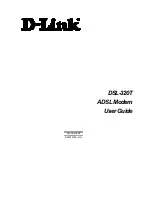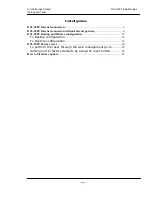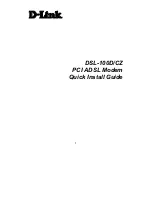
ONU User’s Guide
181
C
H A P T E R
2 4
Differentiated Services
24.1 Overview
Quality of Service (QoS) is used to prioritize source-to-destination traffic flows. All packets in
the flow are given the same priority. You can use CoS (class of service) to give different
priorities to different packet types.
DiffServ is a class of service (CoS) model that marks packets so that they receive specific per-
hop treatment at DiffServ-compliant network devices along the route based on the application
types and traffic flow. Packets are marked with DiffServ Code Points (DSCPs) indicating the
level of service desired. This allows the intermediary DiffServ-compliant network devices to
handle the packets differently depending on the code points without the need to negotiate
paths or remember state information for every flow. In addition, applications do not have to
request a particular service or give advanced notice of where the traffic is going.
24.1.1 What You Can Do in the DiffServ Screen
• The
DiffServ
screen lets you apply marking rules or IEEE 802.1p priority mapping on a
selected port (
• The
DSCP
screen lets you prioritize all traffic based on the incoming DSCP value
according to the DiffServ to IEEE 802.1p mapping table (
24.1.2 What You Need to Know About the DiffServ Screen
The following terms and concepts may help as you read through this chapter.
DSCP and Per-Hop Behavior
DiffServ defines a new DS (Differentiated Services) field to replace the Type of Service (ToS)
field in the IP header. The DS field contains a 6-bit DSCP field which can define up to 64
service levels and the remaining 2 bits are defined as currently unused (CU). The following
figure illustrates the DS field.
Figure 94
DiffServ: Differentiated Service Field
DSCP is backward compatible with the three precedence bits in the ToS octet so that non-
DiffServ compliant, ToS-enabled network device will not conflict with the DSCP mapping.
DSCP (6 bits)
CU (2 bits)
Summary of Contents for ONU-2024 Series
Page 2: ......
Page 7: ...Safety Warnings ONU User s Guide 7 This product is recyclable Dispose of it properly...
Page 8: ...Safety Warnings ONU User s Guide 8...
Page 20: ...Table of Contents ONU User s Guide 20...
Page 28: ...List of Tables ONU User s Guide 28...
Page 30: ...30...
Page 38: ...Chapter 2 Hardware Installation and Connection ONU User s Guide 38...
Page 44: ...Chapter 3 Hardware Connections ONU User s Guide 44...
Page 46: ...46...
Page 64: ...Chapter 6 System Status and Port Statistics ONU User s Guide 64...
Page 76: ...Chapter 7 Basic Setting ONU User s Guide 76...
Page 78: ...78...
Page 108: ...Chapter 11 Spanning Tree Protocol ONU User s Guide 108...
Page 158: ...Chapter 20 Authentication Accounting ONU User s Guide 158...
Page 174: ...Chapter 22 Loop Guard ONU User s Guide 174...
Page 175: ...175 PART IV IP Application Static Route 177 Differentiated Services 181 DHCP 185...
Page 176: ...176...
Page 180: ...Chapter 23 Static Route ONU User s Guide 180...
Page 192: ...192...
Page 216: ...Chapter 27 Access Control ONU User s Guide 216...
Page 222: ...Chapter 29 Syslog ONU User s Guide 222...
Page 236: ...236...
Page 254: ...Appendix C Legal Information ONU User s Guide 254...
Page 260: ...Appendix D Customer Support ONU User s Guide 260...
Page 268: ...Index ONU User s Guide 268...
















































